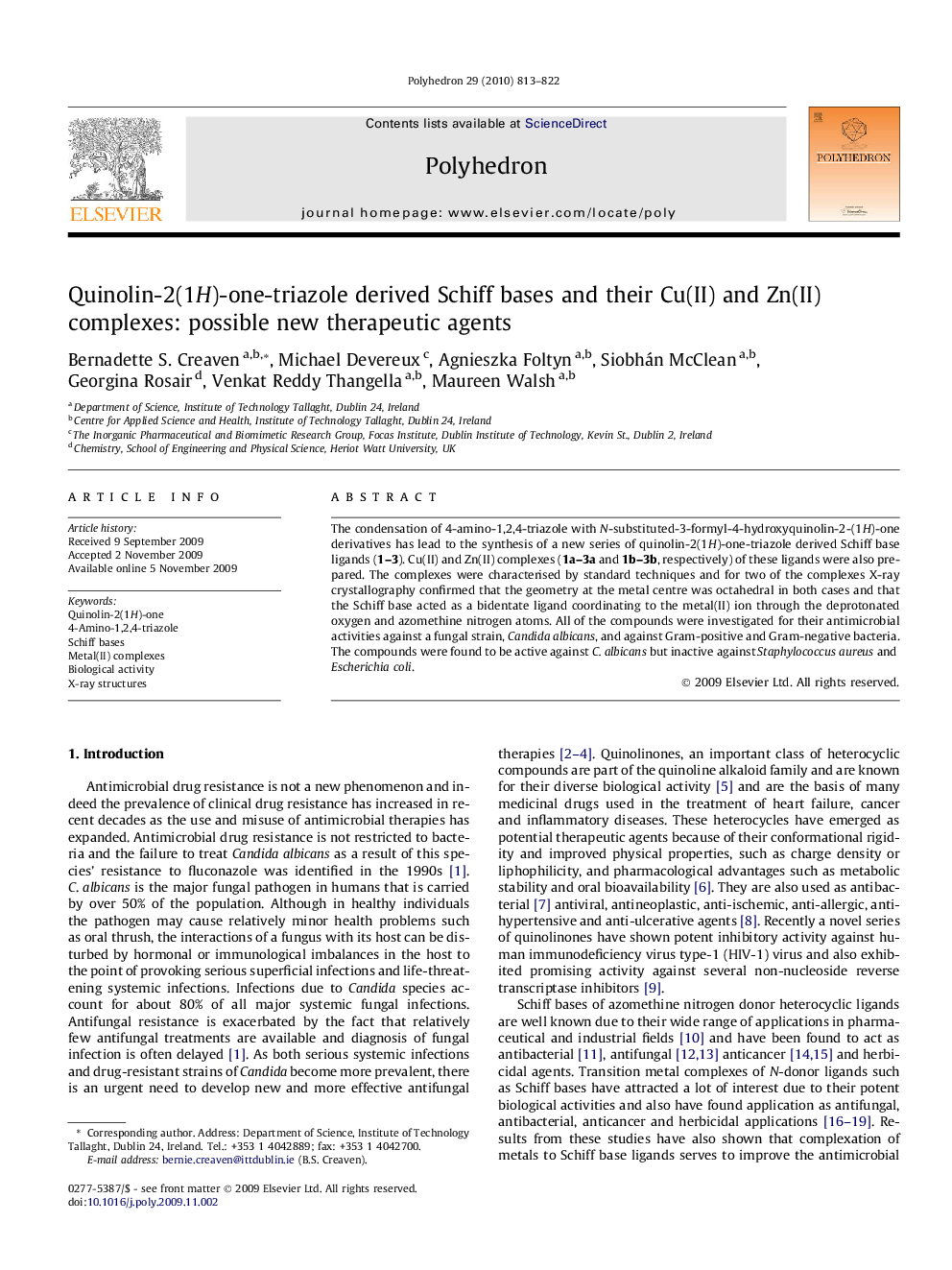| کد مقاله | کد نشریه | سال انتشار | مقاله انگلیسی | نسخه تمام متن |
|---|---|---|---|---|
| 1334915 | 979482 | 2010 | 10 صفحه PDF | دانلود رایگان |

The condensation of 4-amino-1,2,4-triazole with N-substituted-3-formyl-4-hydroxyquinolin-2-(1H)-one derivatives has lead to the synthesis of a new series of quinolin-2(1H)-one-triazole derived Schiff base ligands (1–3). Cu(II) and Zn(II) complexes (1a–3a and 1b–3b, respectively) of these ligands were also prepared. The complexes were characterised by standard techniques and for two of the complexes X-ray crystallography confirmed that the geometry at the metal centre was octahedral in both cases and that the Schiff base acted as a bidentate ligand coordinating to the metal(II) ion through the deprotonated oxygen and azomethine nitrogen atoms. All of the compounds were investigated for their antimicrobial activities against a fungal strain, Candida albicans, and against Gram-positive and Gram-negative bacteria. The compounds were found to be active against C. albicans but inactive against Staphylococcusaureus and Escherichia coli.
The condensation of 4-amino-1,2,4-triazole with N-substituted-3-formyl-4-hydroxyquinolin-2-(1H)-one derivatives has lead to the synthesis of a new series of quinolin-2(1H)-one-triazole derived Schiff base ligands. Cu(II) and Zn(II) complexes of these ligands were also prepared. X-ray crystallography confirmed that the geometry at the metal centre was octahedral and that the Schiff base acted as a bidentate ligand coordinating to the metal(II) ion through the deprotonated oxygen and azomethine nitrogen atoms. All of the compounds were investigated for their antimicrobial activities against a fungal strain, Candida albicans, and against Gram-positive and Gram-negative bacteria.Figure optionsDownload as PowerPoint slide
Journal: Polyhedron - Volume 29, Issue 2, 1 February 2010, Pages 813–822